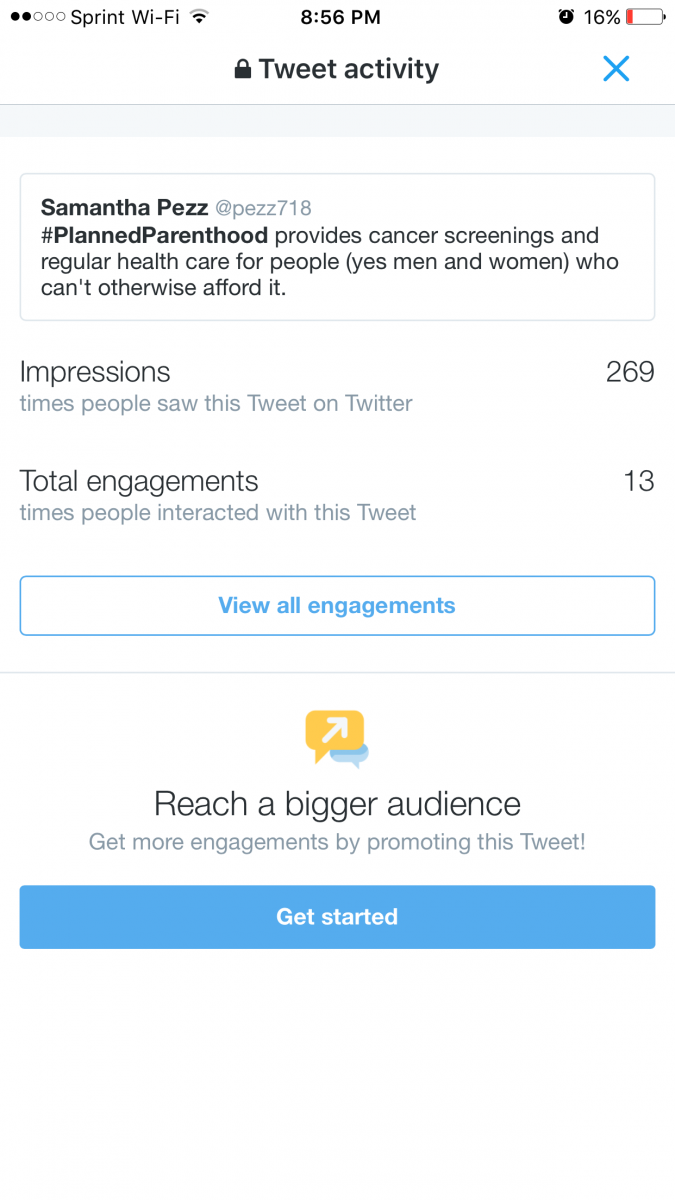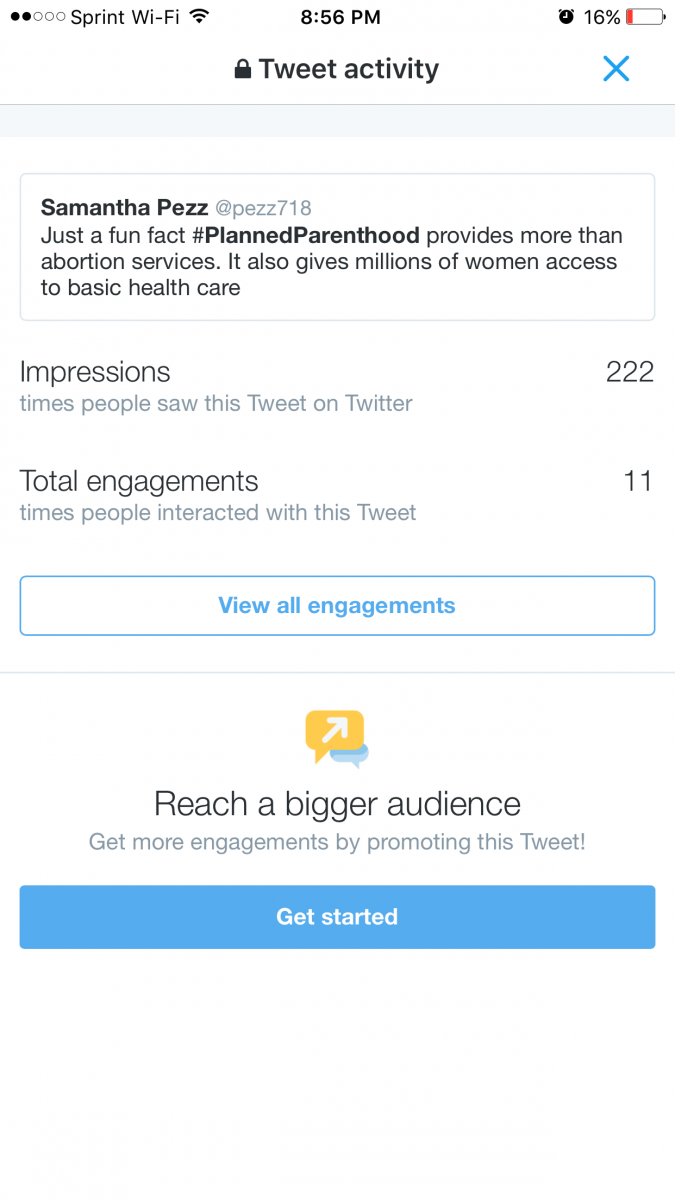Rampton, John. “25 Ways to Grow Your Social Media Presence.” Forbes. Forbes Magazine, 29 Sept. 2014. Web. 12 Nov. 2015.
The overview of this article is apparent by the name, the intended purpose is to provide users with strategies and concepts to increasing their online presence. Rampton highlights the need to produce relevant content, post often and with engaging tags and to remind users you are human. By staying up to date on current events and what’s online you’re more likely to have your content noticed. In reading this article I thought it was utterly perfect for the proposed experiment I am doing for my final project. I think the strategies are useful but are geared more towards a business or corporation than for an individual. I choose the best or most universal ideas and reshaped them into what I felt would best benefit my goals for the project.
Works, Bernadeen. “HootSuite: Maximize Your Social Media Efforts.” Business Insider. Business Insider, Inc, 26 Dec. 2012. Web. 17 Nov. 2015. <http://www.businessinsider.com/hootsuite-maximize-your-social-media-efforts-2012-12>.
This article is built around the features and purpose of an app like hootsuite. It characterizes the ways in which a user can maximize their online presence using the service. However focusing mainly on the analytic section of this text it clearly highlights the ways in which a user can track their engagement, their exposure, ability to reach an audience and more. Being able to track your statistics is helpful in planning future content, understanding your market and gearing your content to those results. While reading this it is very easy to understand and comprehend as the text is tailored to a specific purpose and audience.
Cohen, James, and Thomas Kenny. “CHAPTERS 2 AND 7.” Producing New and Digital Media Your Guide to Savvy Use of the Web. Independence: Taylor and Francis, 2015. Print.
In chapter two of Cohen and Kenny it is stated that everyone with a user account is a content creator. Making us all authors, photographers and reporters may seem like a powerful tool however in such a large sea of creators one needs to stand out, which correlates to the idea of branding present in chapter 7. It is important when producing content to remember whom you’re talking to, remember who may see it and what image of you that will portray and what content you would like to be associated with. When preforming the ” google yourself” search a user is able to quickly tell what is tied to their name and what misconceptions it may cause. While completing my twitter experiment I plan to turn a close eye to detail and the content i feature on my newsfeed.
Kricfalusi, Elizabeth. “Twitter vs TweetDeck vs Hootsuite: Which Is the Best Twitter Client?” Tech for Luddites. Tech or Luddites, 3 Apr. 2015. Web. 17 Nov. 2015. <http://techforluddites.com/twitter-vs-tweetdeck-vs-hootsuite-which-is-the-best-twitter-client/>.
Kricfalusi provides a quick and realistic view of the various apps available for managing twitter content. While critical of twitter itself not being able to sort newsfeeds (written prior to moments) she notes that these apps enable a user to separate what content they see. TweetDeck, Hootsuite and Twitter itself revolve around fast paced content. Being able to sort through such content makes the site more user friendly and in turn allows select content to be viewed by a target audience. Meaning when posting it is important that a producer of content realize some people prefer to only view certain things. Here it will be important for me to remember this when using hashtags to spark interaction.
Prattler, Adam. “How to Use Twitter Hashtags to Get Noticed.” Social Media Today. 22 Oct. 2013. Web. 17 Nov. 2015. <http://www.socialmediatoday.com/content/how-use-twitter-hashtags-get-noticed>.
Prattler discusses a crucial part of the twitter universe, the hashtag. Over the course of twitter evolution the hashtag has become a dynamic part of starting a conversation and millions of users all over the globe engage. Using a hashtag is a great way to stand out and get your content noticed, remaining relevant, staying engaged and tweeting to provoke response are key ways to increase your twitter base. In week two of my twitter experiment i will focus on hashtags to stay visible, the content of Prattlers article provides interesting ways to do so.
Armstrong, Russel. “Marketing Pros and Cons of Twitter.” Linkedin. Linkedin, 1 Feb. 2015. Web. 17 Nov. 2015. <https://www.linkedin.com/pulse/twitter-marketing-pros-cons-russell-armstrong>.
On his personal blog Armstrong is quick to highlight the bright aspects of twitter but more importantly also remembers to cite the drawbacks. One of the most globally agreed upon downfalls of twitter is it’s ability to easily bury content or loose it as spam under millions of other tweets. He notes it often takes years to brand something and get it noticed as more than typical content. This information is important to understand while attempting to build a brand on twitter. Content strategy takes time and consistency is key.
Olanoff, Drew. “Twitter Debuts Moments.” TechCrunch. 6 Oct. 2015. Web. 17 Nov. 2015. <http://techcrunch.com/2015/10/06/project-glacier/#.cxicwgi:TMDC>.
In october 2015 twitter launched a new feature which it hoped would draw back in the skeptical user base it had lost. Twitter, known for its fast paced and rapid environment scared off many users because they felt it was too confusing to use. Olanoff quotes the CEO of twitter as saying ” it’s not a new house, its a front door”. Which gets to the main point that a fresh tool of organization has been added to the apps main screen making it easier to see the most talked about topics, it enables you to join the conversation, reply to other users and retweet stories. This information will be a starting point while i engage in current content for my project.
Cave, Andrew. “Will Twitter Be Dead in Three Years.” Forbes. Forbes Magazine, 2015. Web. 17 Nov. 2015. <http://www.forbes.com/sites/andrewcave/2015/01/31/will-twitter-still-be-around-for-super-bowl-lii-in-2018/>.
Cave is blunt in his findings about twitter, claiming twitter lacks value for its users. Famously being limited by 140 characters twitter users are often frustrated by having to commit grammatical woes while typing or create multiple tweets to relay one message. Knowing there is opposition or wariness around your branding tool of choice is a factor to consider when attempting to get your content notices, not all people may share your platform. It is clear to see that some people seriously dislike the platform and that limits an audience to some extent.
___________________________
Reflection
While writing a bibliography is not a new concept by any means for me it is totally alien and confusing to me. Though it may seem shocking I have never had to create one outside of listing websites and having just learned about citation machine I was thrown for a loop. I won’t beat around the bush i strongly dislike, possibly even loathe citing, and sourcing thing it is so tedious and boring to get through.
Though in the end I do see the point vaguely, in order to effectively use the source the writer should have a clear and quick understanding of the content and how it fits into the mainstay of their project. If i had to do it over, I wouldn’t.. I’m kidding I would but i still wouldn’t like it. Personally i would rather draw solely from my project over the sources but I understand it needs objectives and reference points to not be biased. Overall I am glad thats over with and I can move forward with my project.





